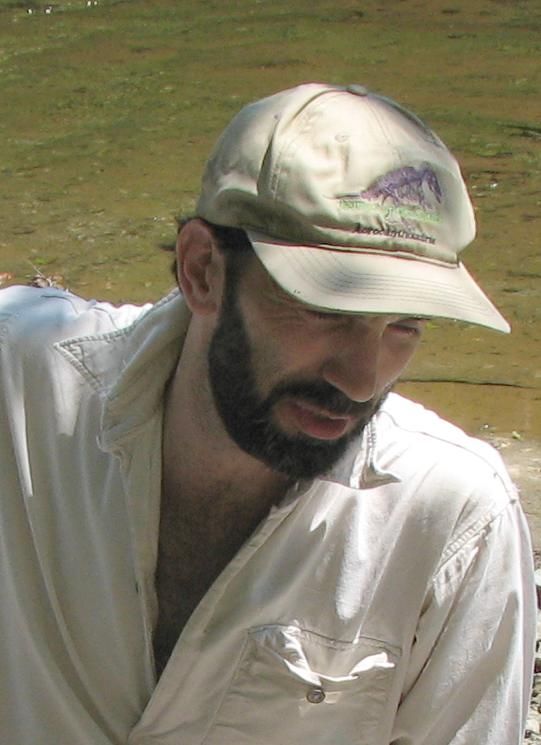BPS History
The Birmingham Paleontological Society is a non-profit corporation, operating under IRS 501c3 guidelines. It was established as an unincorporated organization in 1984 by James Lamb and Gorden Bell, who at that time were both employees of the Paleontology Lab at the Red Mountain Museum in Birmingham, Alabama. Members assisted in collecting fossil specimens for the museum, and shared an interest in learning the science of Paleontology. BPS was formally incorporated in Birmingham, Jefferson County, Alabama in September 2004, our 20th anniversary, and is one of the most active organizations of its kind in the southeastern United States.
The original mission, according to James Lamb, was that the club be
a venue to bring professionals and amateurs together. The very
first
field trip of the BPS was to collect trilobites near Anniston. There is
a world-wide trilobite extinction event in the Cambrian, in which large
forms died out and were survived by much smaller genera. The exact part
of the Cambrian section that preserves this turnover is exposed in
Rainbow
City, and one of the world's experts on this boundary, Dr. Pete Palmer,
had been trying to narrow in on the exact level for years. BPS
collected
at intervals along the exposure and sent representative examples to
Palmer
(through then club President, Scott Brande). So, even from the
beginning,
BPS has always had a very good relationship with professional
scientists.
together. The very
first
field trip of the BPS was to collect trilobites near Anniston. There is
a world-wide trilobite extinction event in the Cambrian, in which large
forms died out and were survived by much smaller genera. The exact part
of the Cambrian section that preserves this turnover is exposed in
Rainbow
City, and one of the world's experts on this boundary, Dr. Pete Palmer,
had been trying to narrow in on the exact level for years. BPS
collected
at intervals along the exposure and sent representative examples to
Palmer
(through then club President, Scott Brande). So, even from the
beginning,
BPS has always had a very good relationship with professional
scientists.
James is currently Curator of Collections for the Black Belt Museum in Livingston, Alabama, and had these comments to make about past (2000-2001) efforts of BPS to make amphibian trackways found in Walker Co, Alabama available to researchers via internet photos, and having each trackway documented in museum records by the Museum of Natural History in Tuscaloosa, Alabama:
"As for how Union Chapel compares to other activities, I think in terms of the size of the activity, and more importantly the fact that BPS engineered the activity itself, it has to be the biggest activity of its kind. It really is a model of how amateur clubs can work to the benefit of themselves as interested collectors and the museum/university community through preserving material and making it available for study. The use of the Internet to post results was something not generally available when the club first started, and it was always the one thing I never had a good answer to - i.e. documenting collections. In sum, it is exactly what I hoped the BPS would become.
...I have heard no end of praise for the role of the BPS in trackway collecting, etc. at the most recent Geological Society of America meeting here in Raleigh. I can't tell you how proud I was - the pride was mine but the hard work was all yours!"
Trips over the years have included monthly visits to sites that include private land, museum sites, roadcuts, creeks, badlands, islands, the ocean and lakes, with members assisting in surveying, collecting, and hauling out the fossils, and basically, just having a great time doing it! Many have found items that are now in museum collections, where they are available to researchers around the world. Our monthly meetings feature talks by professionals on all aspects of paleontology and geology; sometimes, we even branch out into other areas of natural history. A few members have given talks in the community, or set up displays in county schools, museums and special events.
The membership consists of individuals from all walks of life, who enjoy looking for and learning about fossils, experiencing Alabama natural history first hand, and who enjoy spending time in the Alabama outdoors.
- - Vicki Lais
